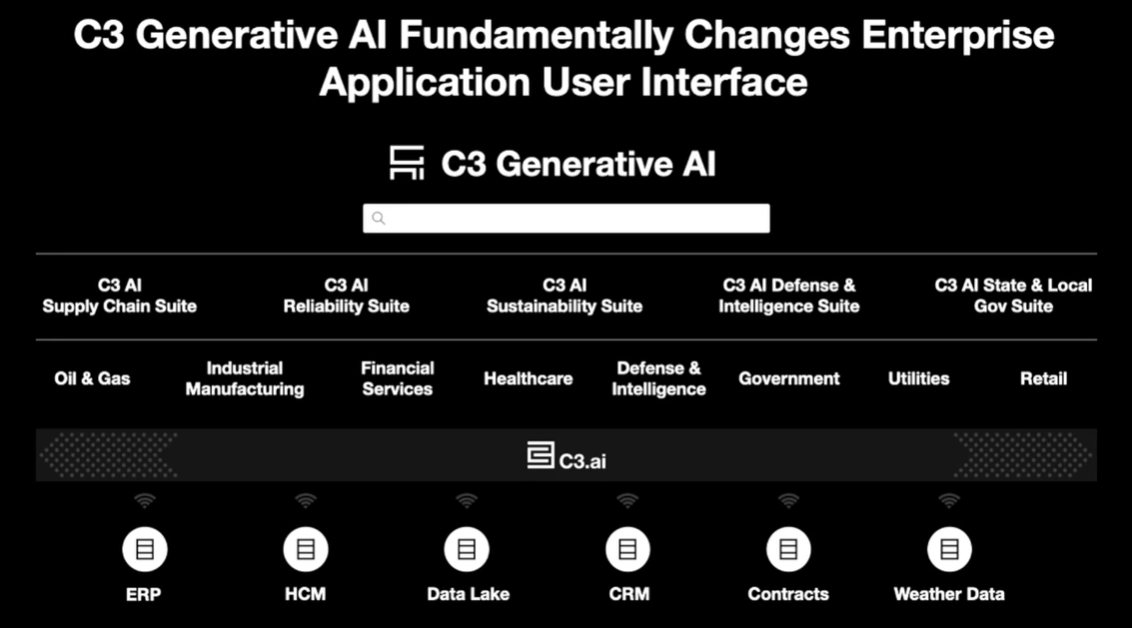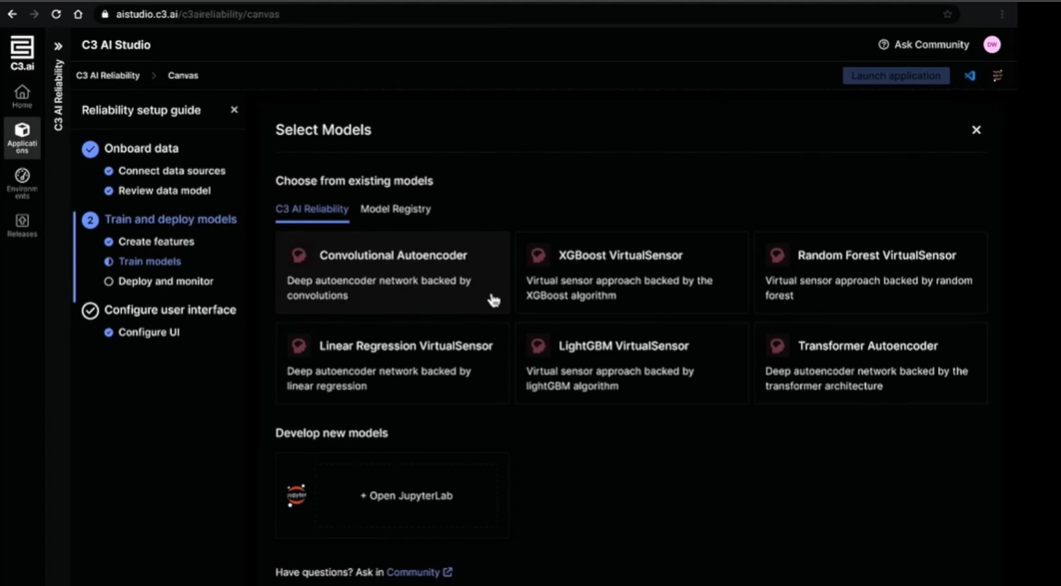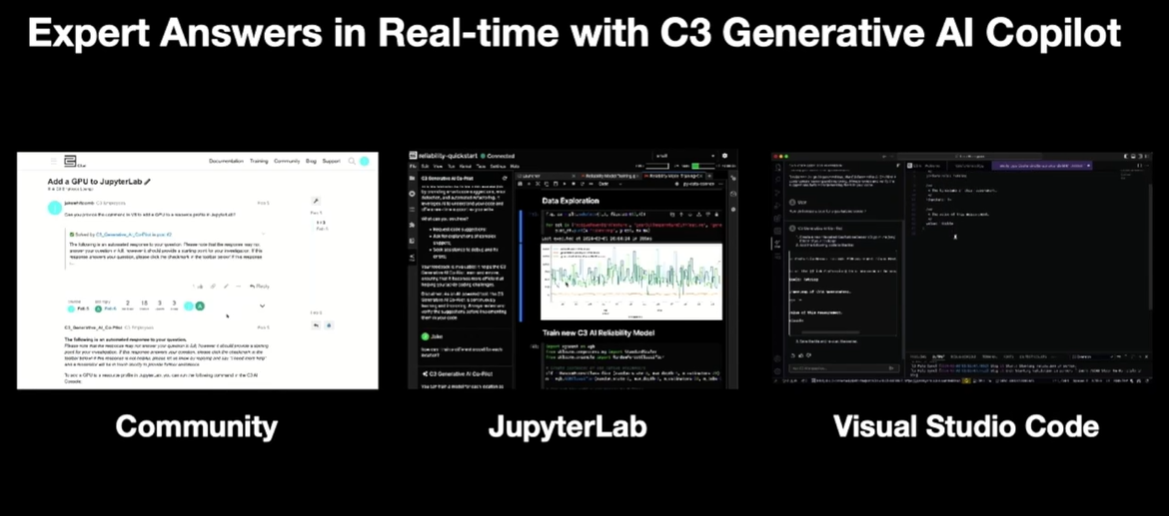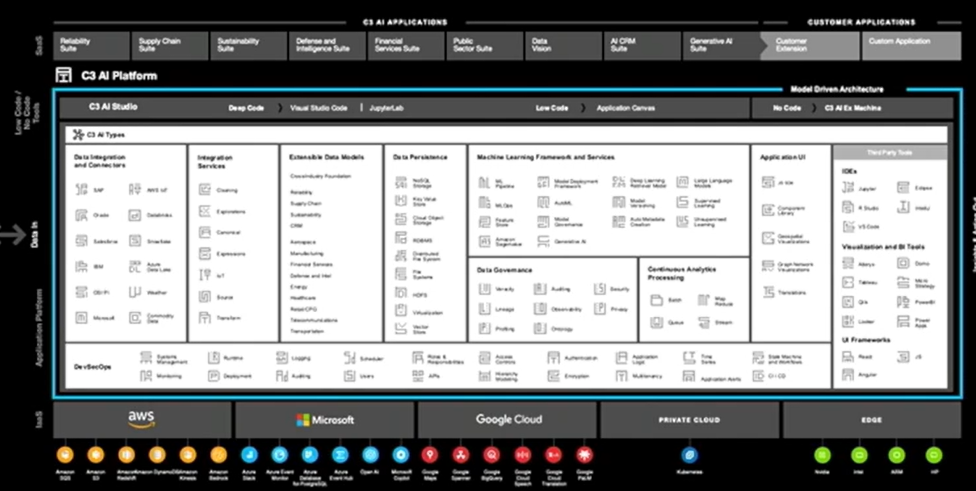20240306 C3 Transform 2024 Day One Wrap Up from Constellation Research on Vimeo.
C3 AI outlined its product roadmap for the rest of the year and C3 AI Vision, which will provide spatial representations via data points. C3 AI Vision will cover a bevy of use cases for logistics, sourcing optimization, military, law enforcement, process optimization and aircraft readiness.
Tom Siebel, CEO of C3 AI, outlined C3 AI Vision at Transform 2024 holding an Apple Vision Pro. He had Apple's headset to highlight how spatial computing could ultimately be the user interface for C3 AI Vision. Siebel also said that enterprise software applications needed new interfaces as he compared his old Siebel Systems interfaces with Salesforce, Oracle and SAP to show how little things have changed.
Siebel said C3 AI Vision aims to take a step ahead with enterprise interfaces and vision will be critical for industries like logistics and manufacturing.
"C3 AI Vision can integrate data from any set of data," said Siebel. "The kind of data we need to ingest is drone images, telemetry, and AI models. This requires a new way of thinking. Our world is awash in data and to harness its true potential we must analyze it from every angle and experience AI decision support in a new immersive user experience."
Related: How Baker Hughes used AI, LLMs for ESG materiality assessments | C3 AI launches domain-specific generative AI models, targets industries | C3 AI CEO Tom Siebel: Generative AI enterprise search will have wide impact
Siebel said C3 AI Vision can be used to create digital twins on the fly so enterprises can visualize situations. Apple Vision Pro is in its first iteration and will improve over time and offer enterprises new ways to work with generative AI, AI and data. C3 AI Vision's interface will evolve over time, said Siebel.
C3 AI Vision will be embedded across the platform and applications focused on industries and use cases.
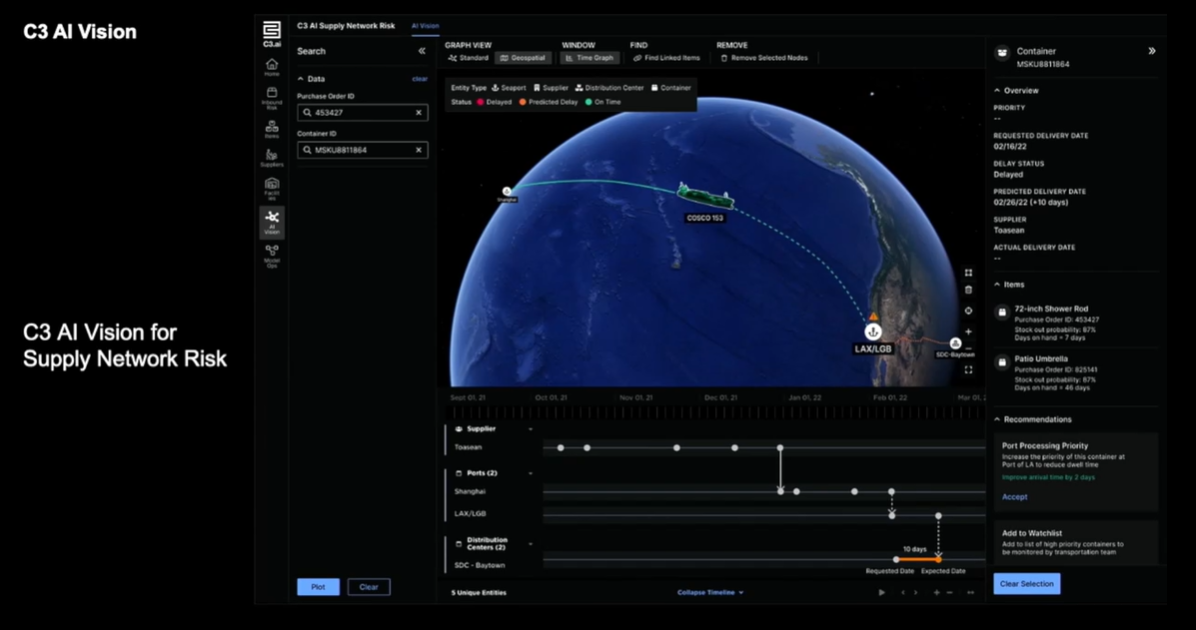
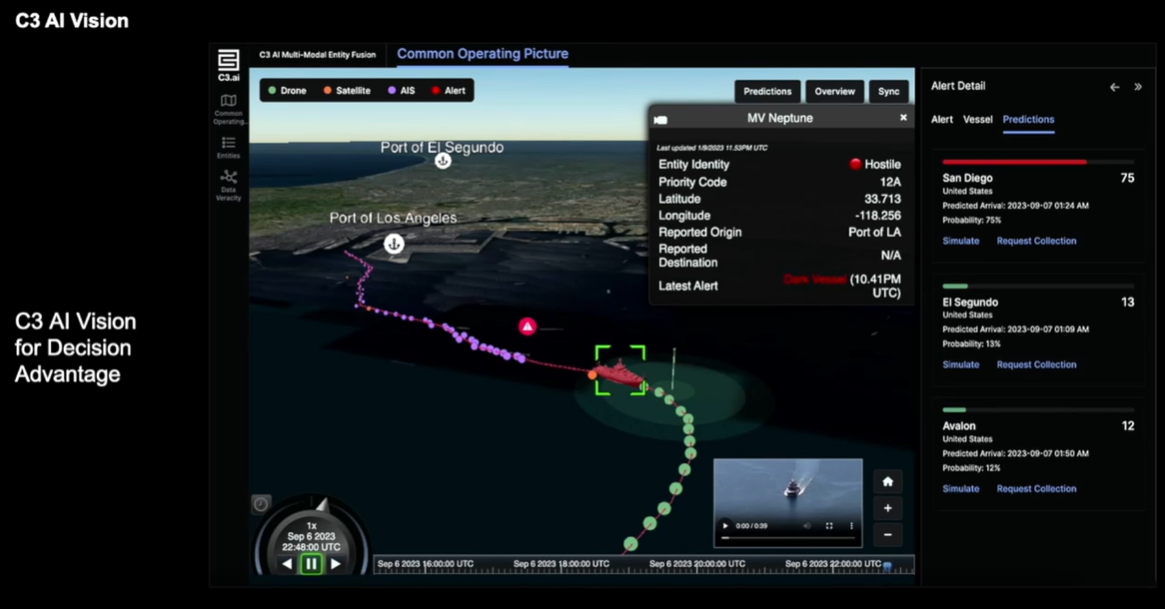
C3 AI Vision demos were being held at Transform with preview sign-ups available.

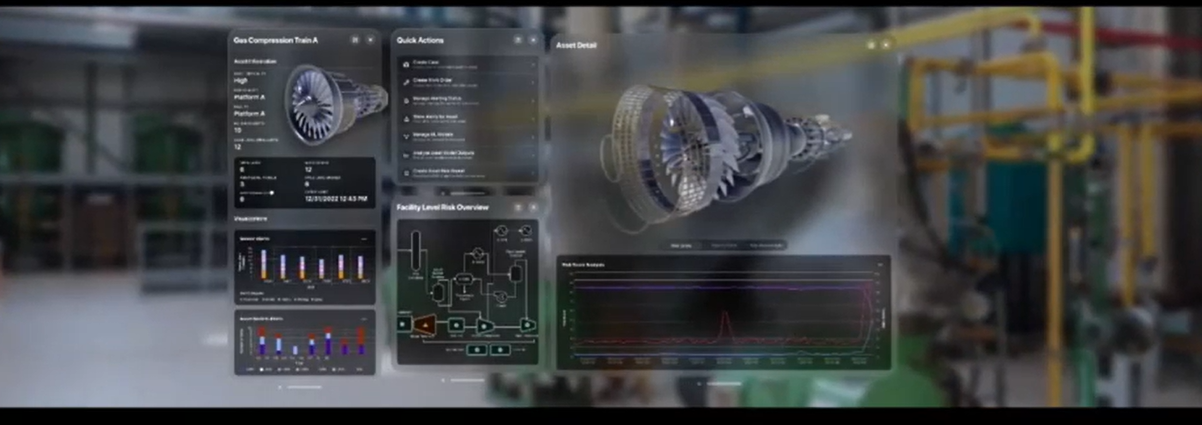
Transform, held in Boca Raton, FL, will feature talks from customers such as Holcim, Con Edison, GSK, and US Air Force along with product roadmap discussions.
C3 AI's news at Transform follows a strong fiscal third quarter earnings report that highlighted accelerating revenue growth. The company reported a net loss of 60 cents a share and an adjusted loss of 13 cents a share on revenue of $78.4 million, up 18% from a year ago.
The company said that it closed 50 agreements in the third quarter including 29 new pilots. C3 AI said that its qualified pipeline was up 73% from a year ago. As for the outlook, C3 AI said fourth quarter revenue will be $82 million to $86 million. For fiscal 2024, C3 AI projected revenue of $306 million to $310 million.
The roadmap
Edward Abbo, CTO of C3 AI, walked through demos of what's in the C3 AI platform today and what's to come. Since launching C3 AI Generative AI last year at Transform, the company has deployed 47 customer use cases across multiple industries. US Air Force, Baker Hughes, Boston Scientific and Con Edison are reference customers.
"There's really a wide range of cases. Some of these sit on top of AI applications. Many of these are standalone, and so generative AI can really transform that human computer interaction helping you get insights faster, more effectively," said Abbo.
The architecture for C3 AI is to keep large language models distinct from the data. In a demo, Abbo walked through what's in the platform today.
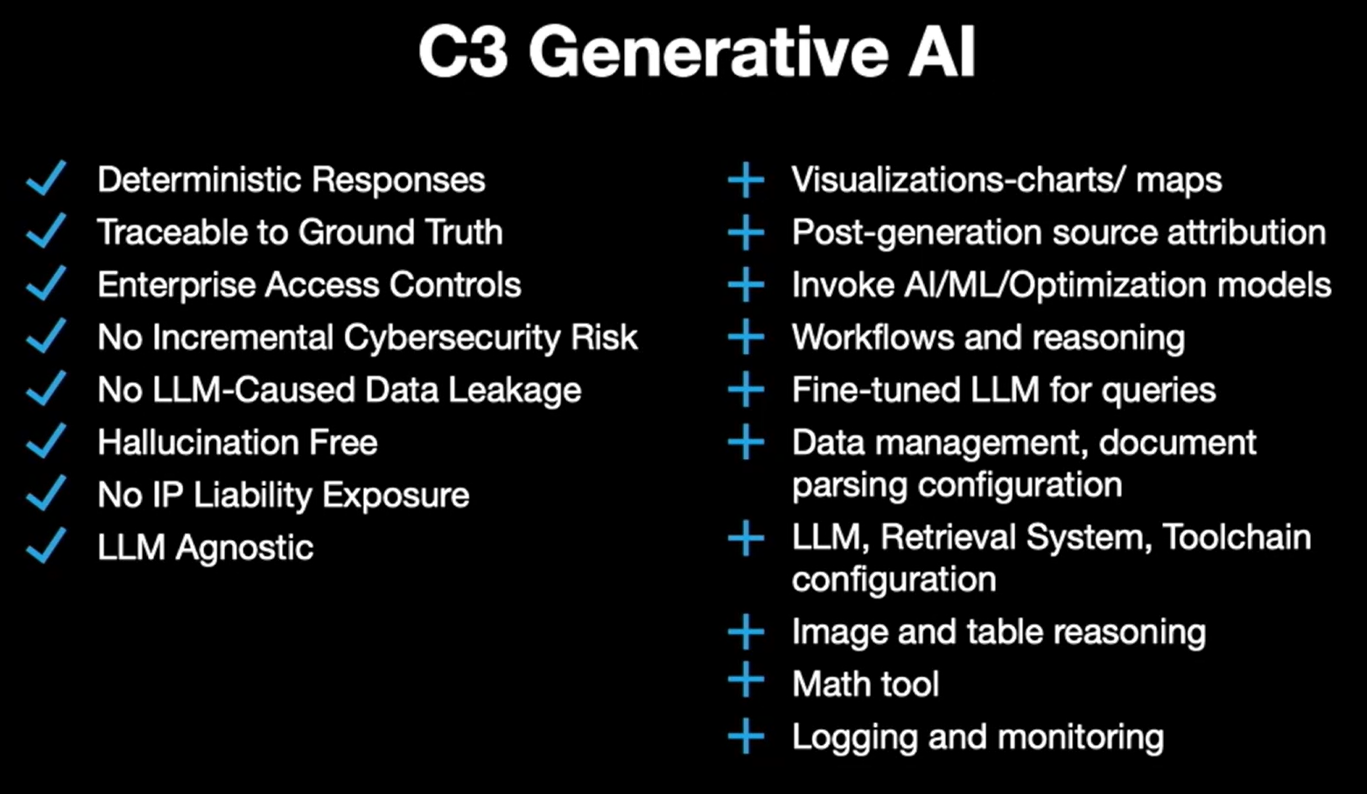
As for the roadmap, Abbo said C3 AI's summer release will focus on retrieval augmented generation improvements. In the fall, C3 AI will focus on developer support.
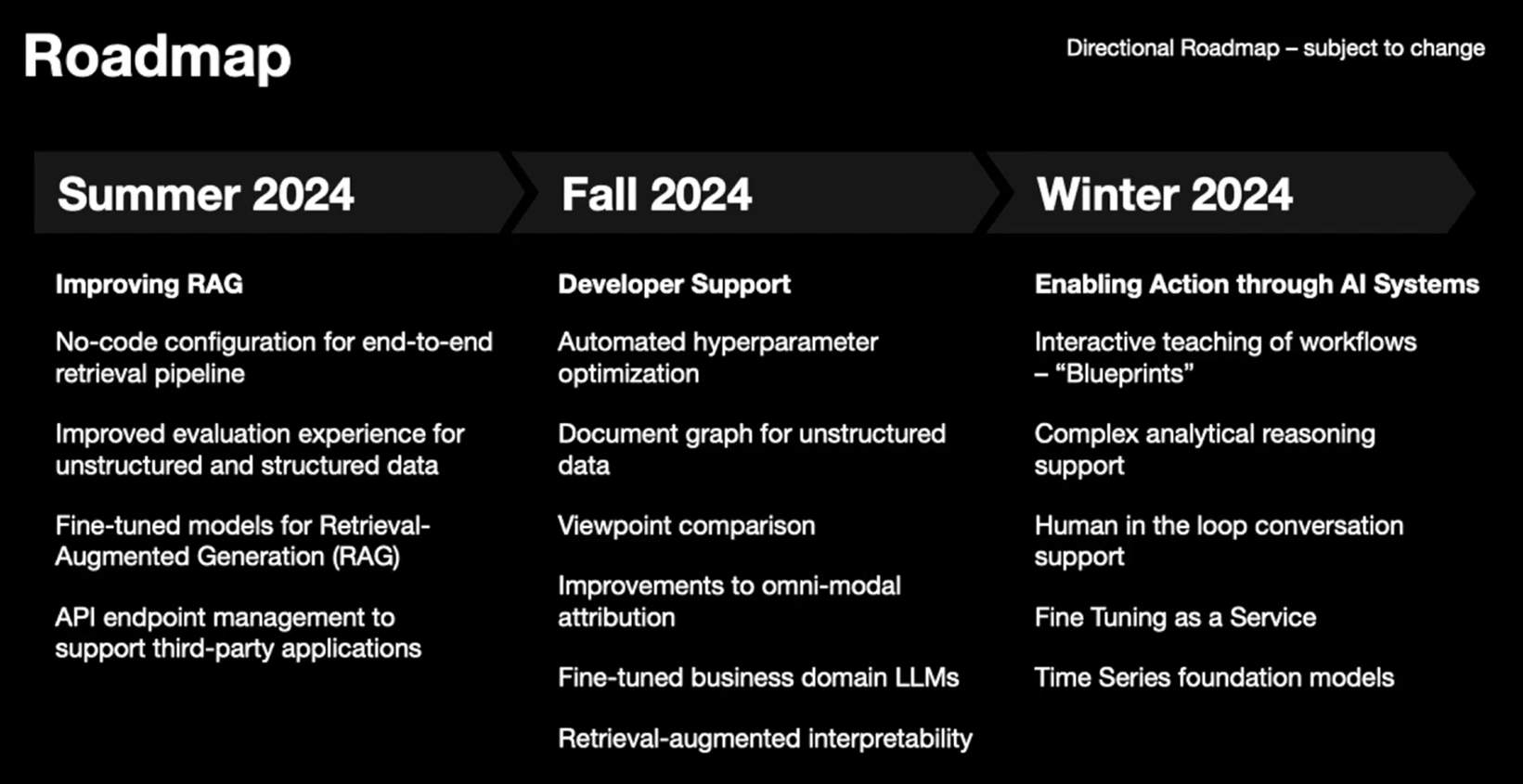
The Winter release will revolve around converting intelligence into actions. "We want to focus on enabling actions not just following a workflow, but actually teaching the system how to do specific, complex tasks," said Abbo.
Business value focus
Adrian Rami, Group Vice President, Products & Engineering at C3 AI, said business use cases across industries can drive billions of dollars for oil and gas, manufacturing, healthcare and financial services.
Rami said enterprises need to pick the right use cases with high value, feasibility and repeatability while avoid custom builds. Enterprises need to scale across use cases with one AI, analytics and machine learning foundation. "We recognize what our platform needs to deliver for high value use cases with a common foundational data model," said Rami.
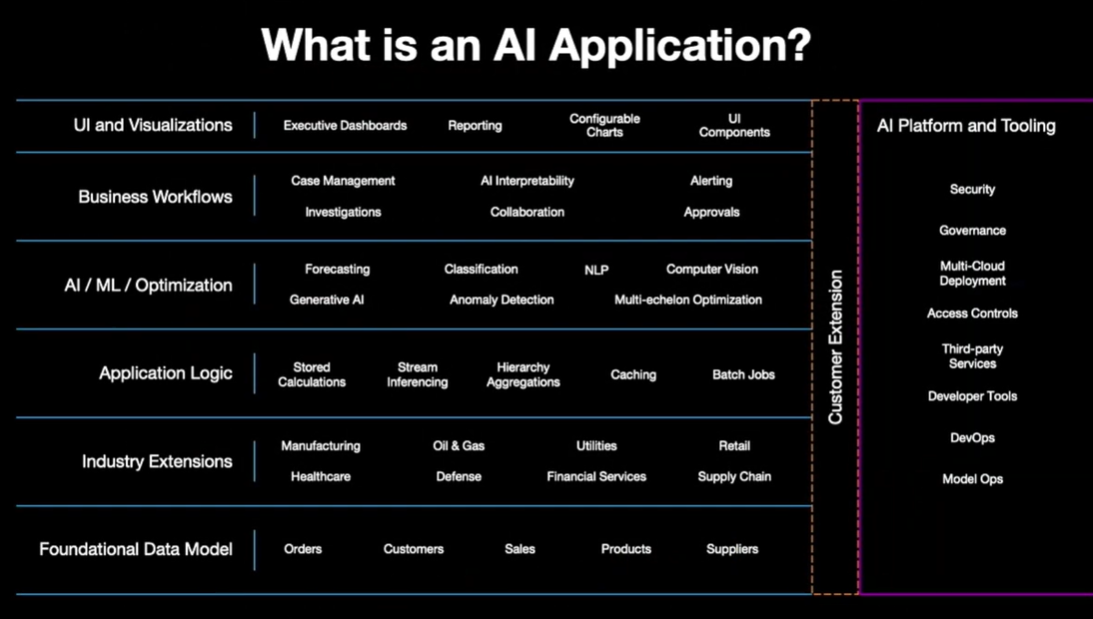
During a keynote, Rami said an enterprise AI application needs a series of tools and features. He also walked through C3 AI's suites for various functions and industries such as supply chain, reliability, sustainability, state and local government, defense and intelligence.
Jim Apostolides, Senior Vice President, Enterprise Operational Excellence at Baker Hughes, outlined how the company scaled C3 AI's platform. Apostolides now has more than 50% of inventory optimization accepted automatically without human intervention at the end of 2023. In 2021, that figure was 3%.
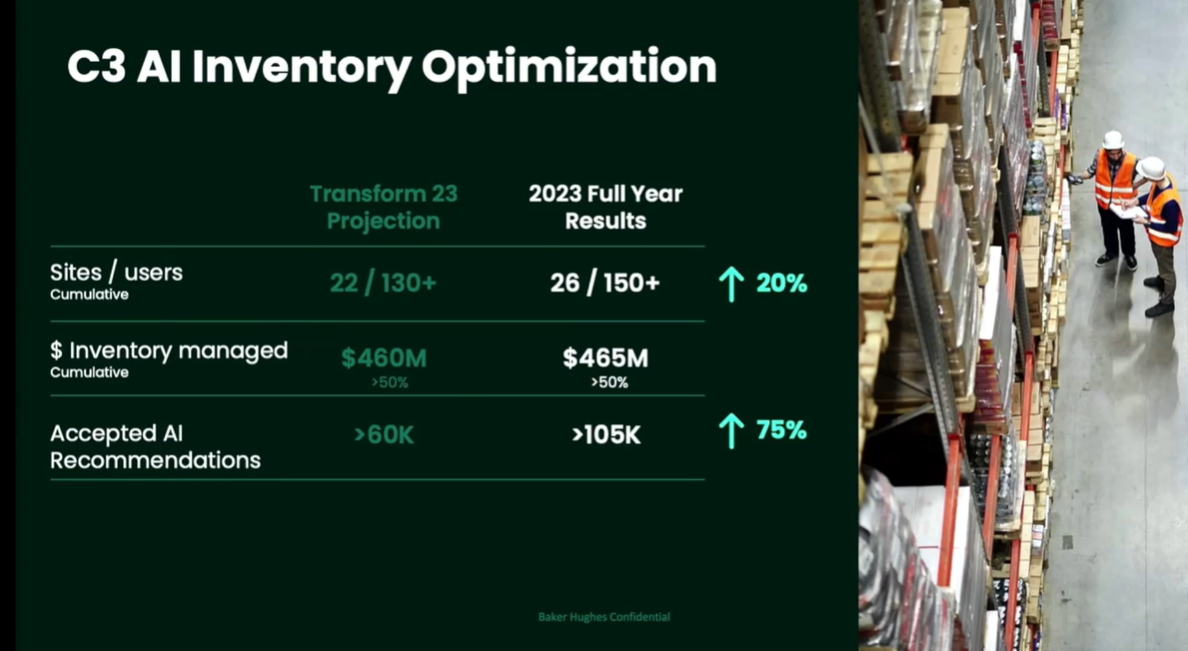
Baker Hughes also used C3 AI for sourcing optimization to improve purchase orders and other processes. Apostolides said Baker Hughes has focused on picking the right use cases and collaborating with C3 AI to drive value. Baker Hughes recently completed an upgrade to the latest C3 AI platform.
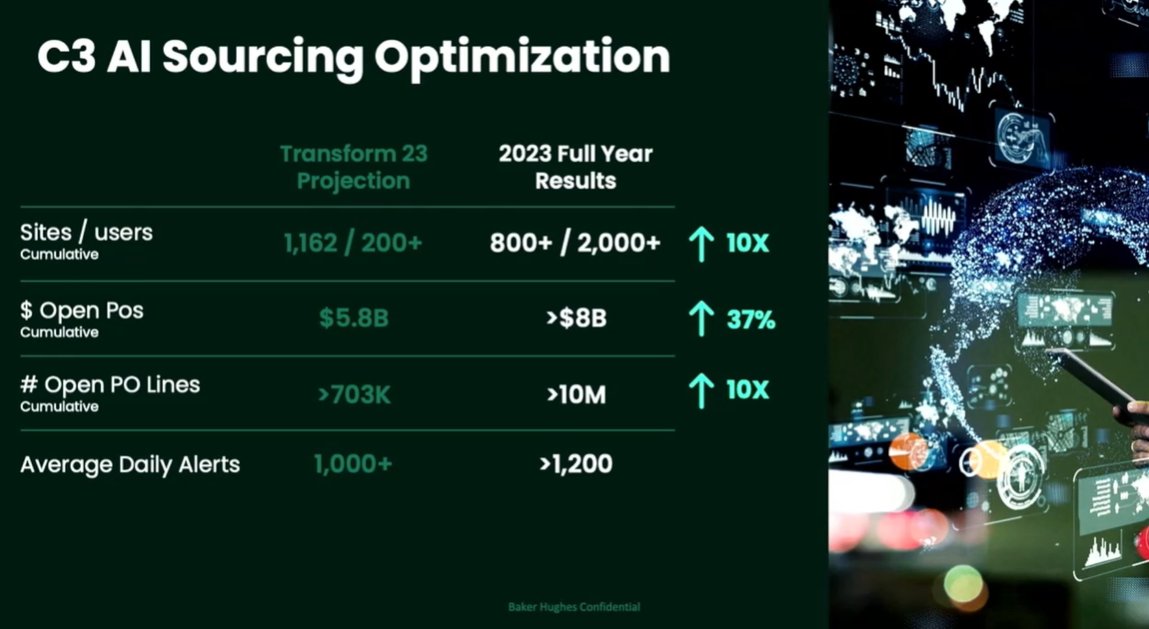
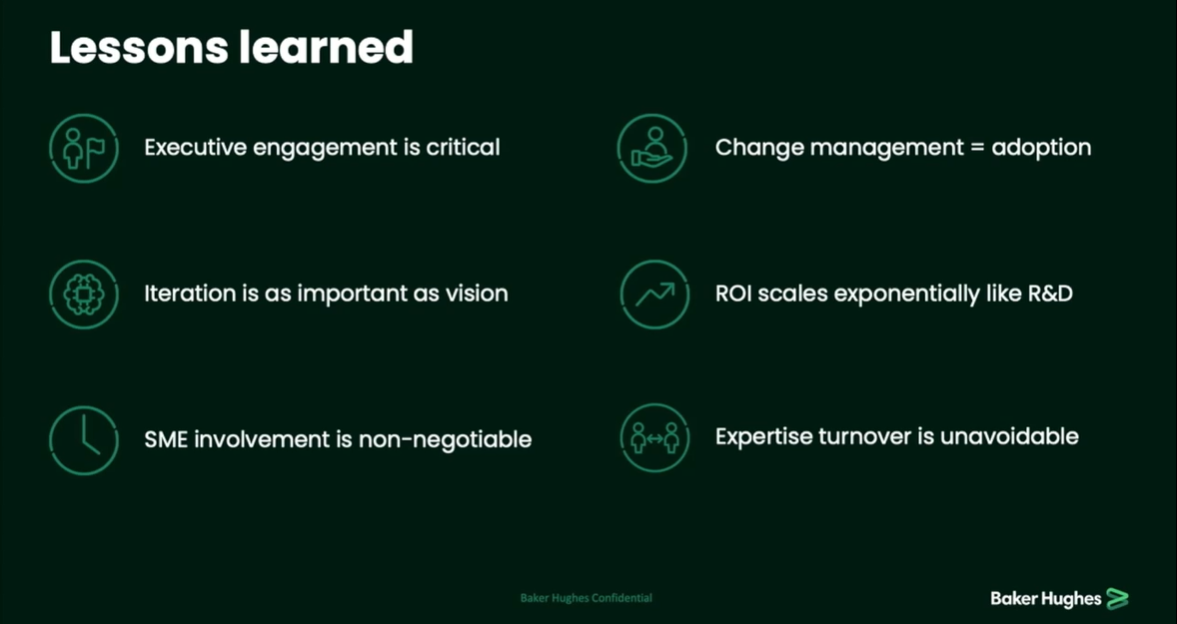
Generative AI embedded throughout platform
Rami said generative AI has the potential to transform the user interface of the C3 AI platform and put data into common business terms. "This will fundamentally change the human-computer interface, and everyone can participate at scale," said Rami.
Jake Whitcomb, Senior Director, Products at C3 AI, walked through advances to make it easier to configure and deploy generative AI. C3 AI will launch a copilot across the platform that will work on multiple products.
The company has drilled down on interfaces with the aim of bringing insights forward quickly without a lot of configurations. C3 AI has launched a quick start feature to onboard data, train models, and configure the interface via C3 AI Studio.
Some screenshots from Whitcomb’s presentation.
